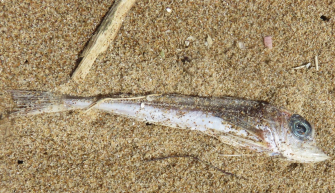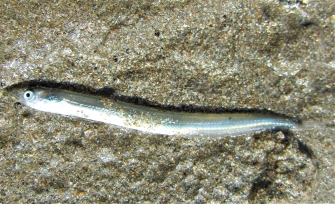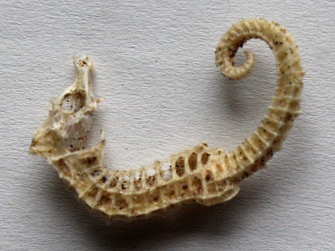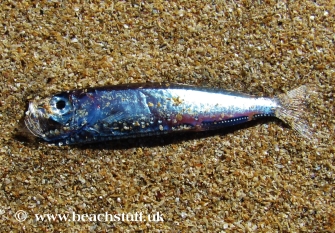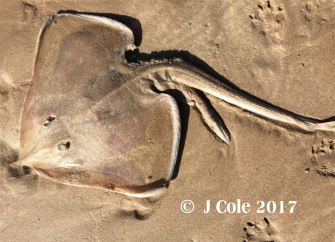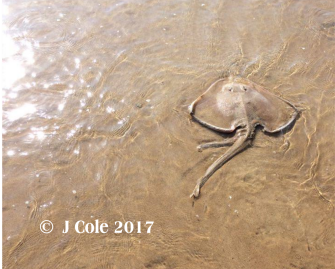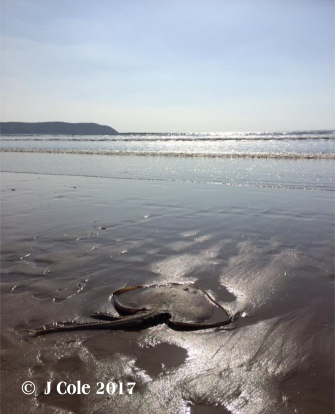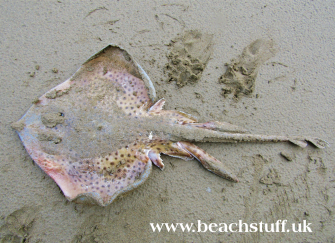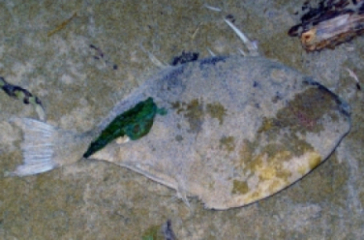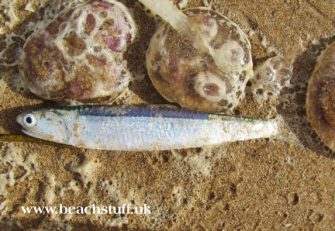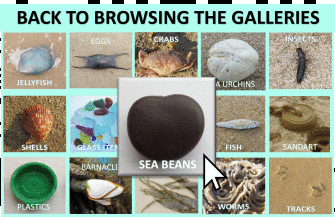

Fish
At times, dead fish are washed up on the strandline. These fish will generally be dead before they are washed up rather than being washed up and then suffocating in the air (in the way that jellyfish do, for example) as fish, unless injured, are generally strong swimmers.
There have been some instances of large numbers of single species being washed up at once. For example, one December, it was reported that thousands of dead sardines had washed up on a beach in West Cornwall, possible due to fishing practices in the vicinity (news report here: itv.com.) However, these spectacular 'gull feasts' are unusual.
Gurnard
The distinctive facial profile of this little fish makes it look like it may be a small gurnard - a fish that feeds on the ocean floor. Cleverly, it appears to 'walk' on the floor to do this.
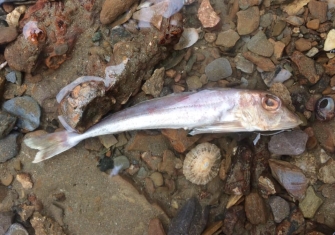
Sand Eel
This sand eel is found commonly in our rock pools. It is not an eel at all but a long slender, silver fish - a couple of inches long. Sand eels are the preferred food of puffins.
For an actual eel, scoot further down the page to this.
Dog fish
The dog fish is a small member of the shark family, a catshark in fact. It has brown spots and feeds on the sea floor - eating whatever it can catch - sea snail, marine worms, fish.
The eggs of the dogfish can be seen here.
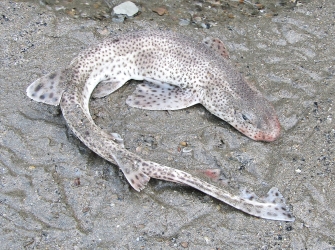
Nursehound
Sometimes called a Greater Dogfish or Bull Huss, this is another member of the shark family that is common in British waters.
The one pictured was found by James stranded on the beach. It was about two foot long and still alive. James got it into a tidal pool to give it a chance of survival.
Starry Smoothhound
The white spots on the back of this shark distinguish it as a starry smooth hound.It is common around UK waters and can grow to about 1.5m in length. They eat crab, lobsters and small fish.
The one pictured is a youngster at around 2 feet long.
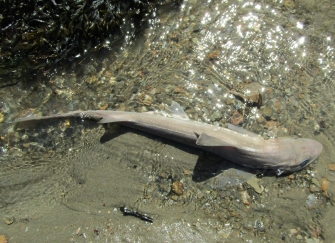
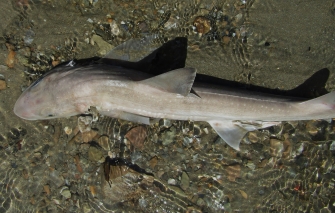



Mueller's pearlside
This little pearlside fish lives in deep water and is rarely found in our shallow seasides except when it is washed up on the beach.
On its underside, you can see lines of tiny lumps. It is thought that in the dark waters where is lives, these lines produce light maybe to confuse predators beneath it.
The ray on the left was stranded on Woolacombe Beach. It had dried in the sun which shriveled it to this hard, leathery crumple.
Two years later, on the same beach, Julie spotted the ray below. Thanks for the photos Julie. It looks like it is a small-eyed ray, a fish whose numbers are under threat because of the loss of its habitat but it is not uncommon in the Bristol Channel.
A spotted ray found in Ilfracombe Harbour, North Devon.
The tail of a ray, showing its 'thorns'.

The 'thorn' or tooth from the tail of a thornback ray. It was black when it was found but faded to beige.
Weever fish
This small fish is the bane of the barefoot surfer's life. It has three thorns behind its head (the dark patch on this dead individual). The fish bury themeselves in wet sand leaving these thorn sticking up giving anyone unfortunate enough to tread on them and very painful surprise. Advice on dealing with these stings can be found here: nhs.uk
Garfish
These impressive-looking slender fish with sharp teeth can grow up to around 70cm long. They are types of needle fish and, as such, are known as sea needles. Have a look at their bones if you get a chance - they are green. Nicky S found the one pictured and it is her photo we have reproduced here.
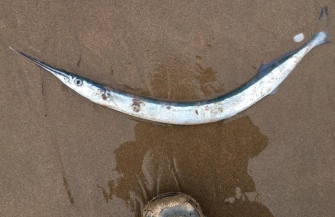
Trigger fish
These are my absolute favourite species of fish to find. Why? If you see one just take a look at its teeth. They look like the sort of typical fish shape anyone might draw, but their teeth are almost like human teeth - in a very fishy mouth. The teeth are not, of course, only there for my amusement but are used to crack open sea urchins and sea snail shells.
Simon Stirrup took the photos below showing a hapless washed up trigger fish's fine teeth.
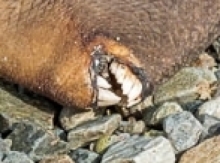

Atlantic Herring
A juvenile herring fish, distinguishable by the blue on its back which is less pronounced in older herrings. Herrings often swim in large shoals in the shallows near the coast. Each fish can grow to be 45cm long.
Unlike moray eels and electric eels, conger eels are commonly found in UK waters. This one was found washed up in North Devon in 2017 by Melissa and measured nearly a metre long. More details on it here.
Below: a conger eel found in Ilfracombe Harbour in 2019. It was about 1-5 to 2 metres long.
Ballan Wrasse teeth
This weird-looking thing, a couple of centimetres across, is the mouth part (pharyngeal plate) of a ballan wrasse fish. The white blobs are teeth which are strong enough to crush their prey of crustaceans and molluscs.
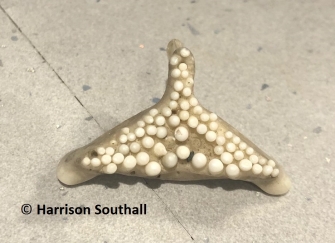

Cartilage
Some fish are cartilaginous which means that they have cartilage rather bone - it feels softer and more like plastic. These include sharks, rays and skates.The pieces of cartilage I find, like this one, are usually from dogfish, nurse hounds etc.
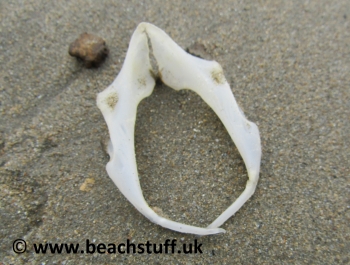
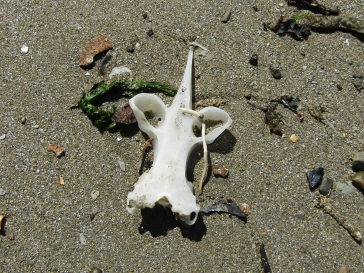
Mystery
Sometimes there isn't too much left...
Have you got more fish pictures?
Share your fish and I'll put them on this site. Go on. You know you want to. Email hello@beachstuff.uk

